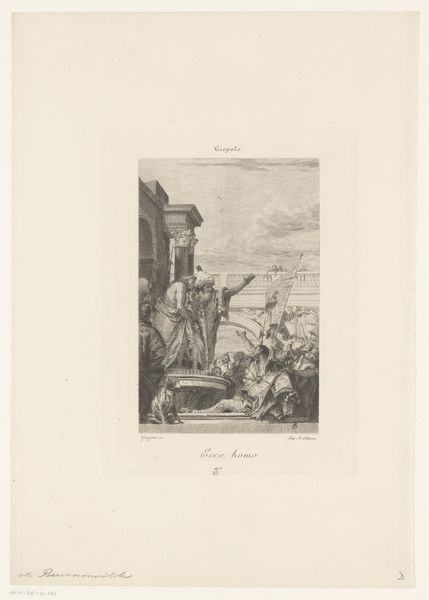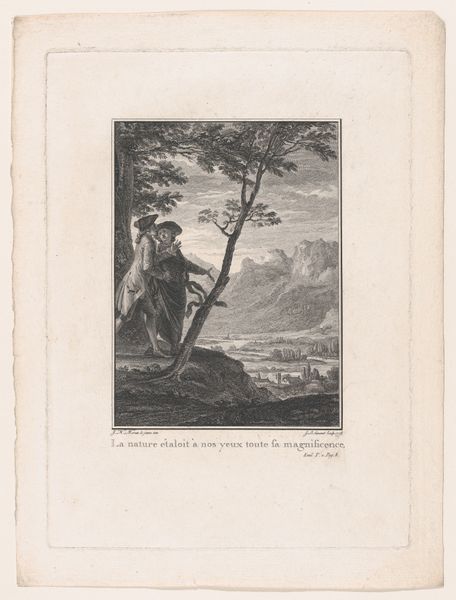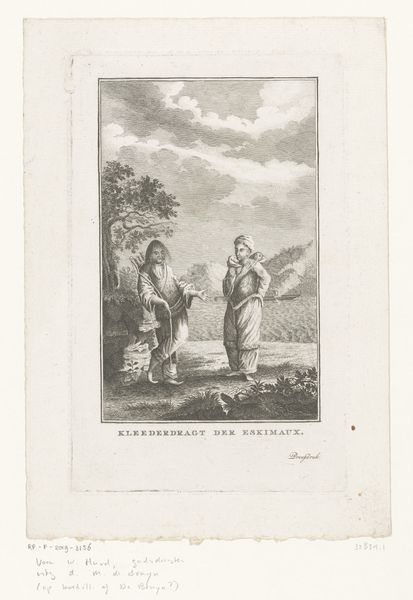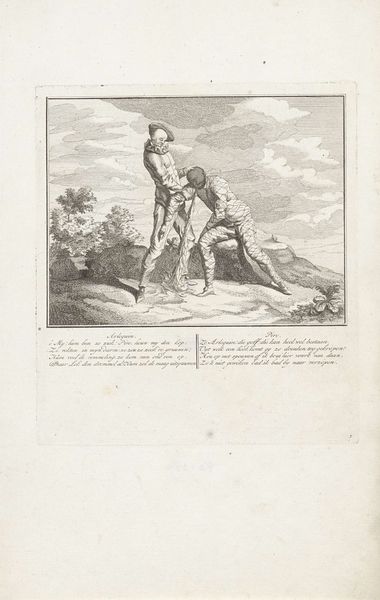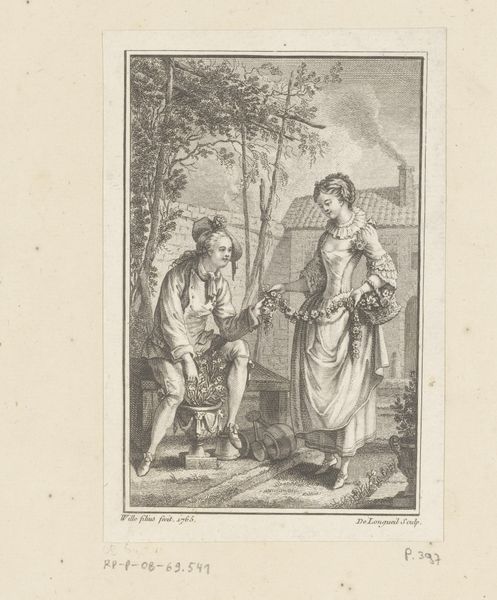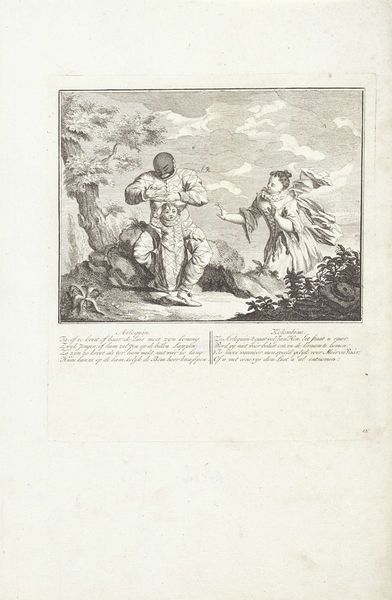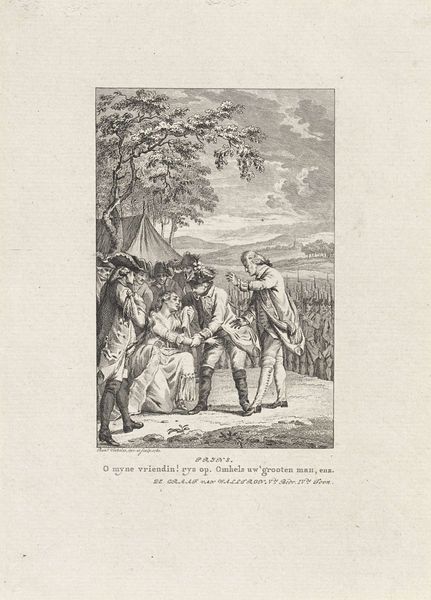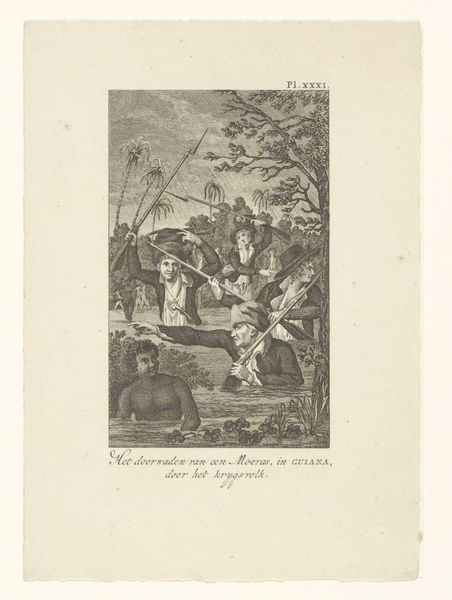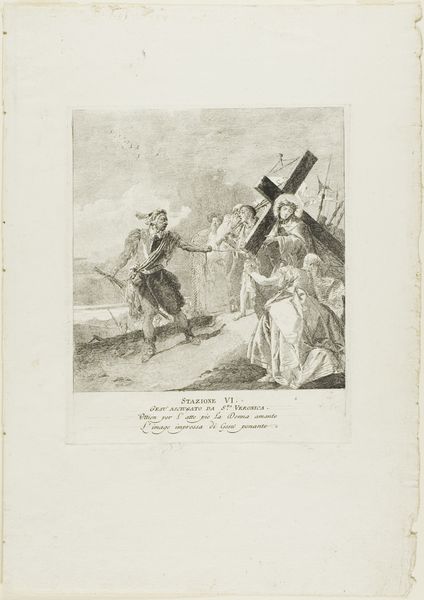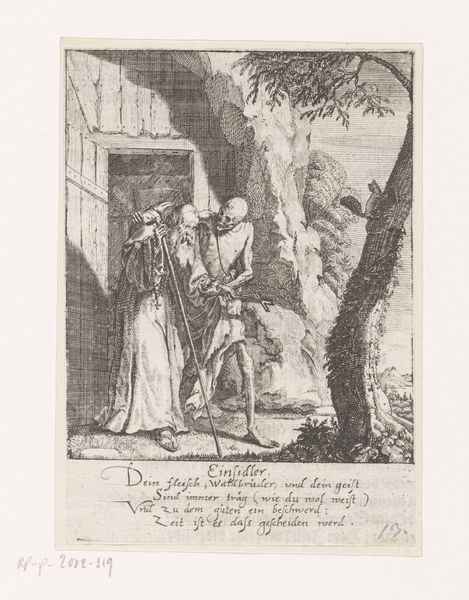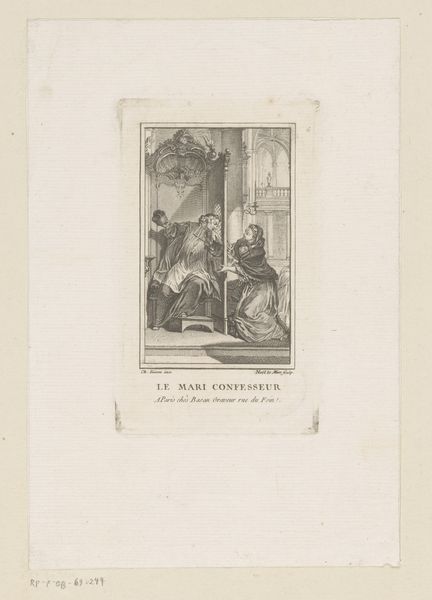
print, engraving
#
baroque
# print
#
old engraving style
#
landscape
#
genre-painting
#
engraving
#
realism
Dimensions: height 198 mm, width 123 mm
Copyright: Rijks Museum: Open Domain
Curator: Jacques Philippe Le Bas created "Zicht" in 1736, an engraving now residing in the Rijksmuseum. What's your immediate response to this piece? Editor: My first impression is somber. It feels quietly observant, but something about the framing, the figure poised between inside and out, suggests a deep social unease. Curator: The work draws us in, doesn't it? From a material standpoint, engravings like this were reproduced and circulated widely, serving a key role in distributing images and knowledge across society. These printed sheets, typically made from etching or engraving, were a means of disseminating visuals. Editor: Precisely. Consider who had access to such prints. The Comtesse de Verrue clearly inhabited a privileged world. The image’s title and text literally lay claim to this context. Who did this ‘vue’ represent, and who was excluded from its apparent neutrality? How complicit are we in simply admiring this as landscape genre painting? Curator: That's a valid consideration. There's an undeniable tension in examining the skill involved while remaining aware of the artwork's entanglement with systems of power and patronage. Do you see it then, as an artistic accomplishment made possible through exploitation, however indirectly? Editor: I think we have to contend with it. Note also the female figure half obscured, lingering in the doorway. The positioning seems to speak to gendered spaces and power dynamics, the woman relegated to the domestic interior as the man, the supposed scholar or artist, gazes out upon the ‘view.’ Curator: Fascinating how the technical craft underscores, or perhaps even veils, these contextual readings. Look at the meticulous lines rendering textures, the light across the landscape. A considerable skill, no doubt. Editor: Agreed. And a skill used in service of representing a specific worldview. Thinking critically means confronting these contradictions, understanding both the beauty of the print and the uncomfortable social realities it reflects. Curator: Food for thought, indeed. This engraving offers a unique perspective. Thank you for sharing this. Editor: And thank you for acknowledging its inherent complexities and inviting the space for that critical discussion.
Comments
No comments
Be the first to comment and join the conversation on the ultimate creative platform.
